Scarce and important prints spanning the career of pioneering photojournalist Lewis W. Hine crown our February 15 auction of Icons & Images: Photographs & Photobooks. Here are some notes from the catalogue, as well as thoughts from Vice President and Director of Photographs & Photobooks Daile Kaplan — the preeminent scholar of Lewis Hine. Her books on his work helped to solidify his oeuvre and cement his place in the pantheon of journalistic photographers.
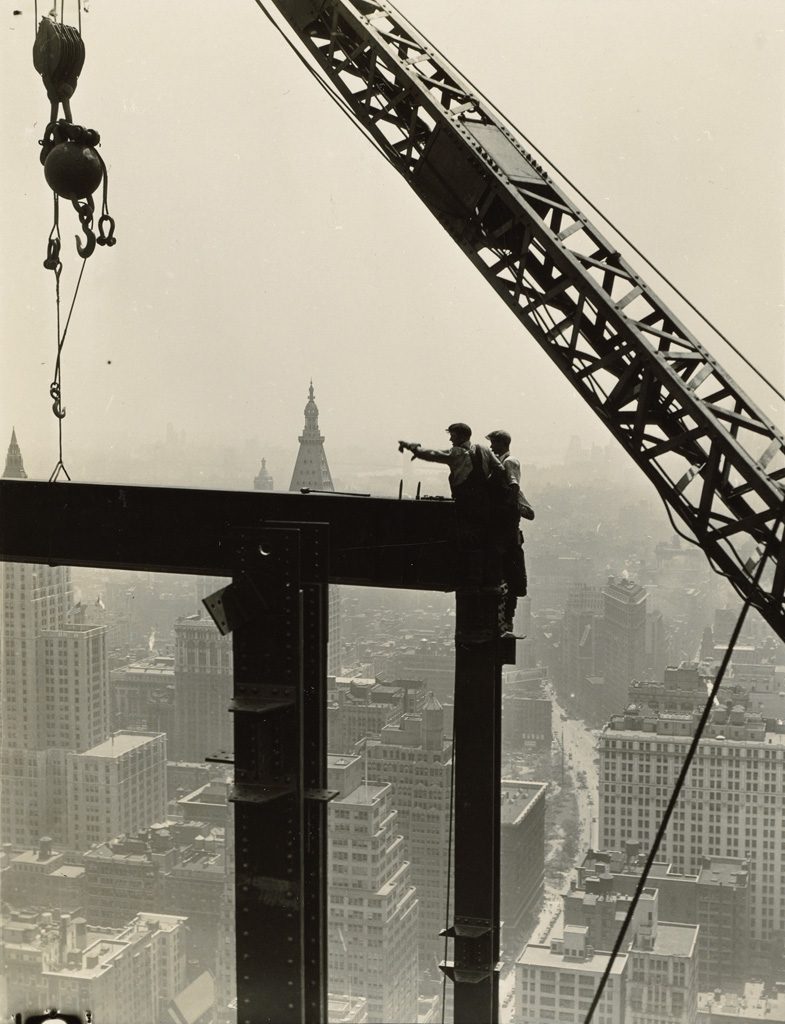
Lot 63: Lewis W. Hine, Derrick and workers on girder, Empire State Building, silver print, 1930-31. Estimate $10,000 to $15,000.
Lewis Wickes Hine was one of the most important social documentary photographers of the twentieth century. He spent years dedicated to his many projects, creating photographs that depicted his subjects with dignity and compassion. Hine coined the dynamic term “photo story” to characterize innovative assemblages of pictures and text and, in his letters, articulated a new role for photography as a fine art form.

Lot 60: Lewis W. Hine, Powerhouse Mechanic, silver print,
circa 1921. Estimate $70,000 to $100,000.
Hine was commissioned by social welfare agencies, progressive publications and corporations to create visual stories, and produced some of the earliest photo essays that affected social change. His dynamic images, like Powerhouse Mechanic and the Empire State Building studies, which have a distinct humanist element, reflect the ethos and excitement associated with the Machine Age. Similarly, his “work portraits” of children toiling in American factories, commissioned by the National Child Labor Committee, highlighted the plight of the working poor and led directly to the institutionalization of stricter child labor laws. His iconic studies of immigrants, child workers and industrial laborers remain powerfully relevant.

Lot 54: Lewis W. Hine, Russian family at Ellis Island, silver contact print, 1905, printed circa 1931. Estimate $6,000 to $9,000.
The prints offered here were collected by Isador Sy Seidman, who owned the Seidman Photo Agency and was also a photographer. Seidman nurtured a lifelong passion for collecting photographs of New York City, and was a friend and patron of Hine. This will be the first time these prints have appeared at auction. The verso of each bears the hand-stamp from Hine’s Hastings-on-Hudson studio; a few boast his handwritten notations and one is signed. A selection of images spanning his entire career is uncommon; additionally, some are contact prints, making them even more scarce.

Lot 45: Lewis W. Hine, One of many youngsters working in Carolina cotton mills, with Hine’s pencil notations on verso, silver contact print, 1908, printed circa 1931. Estimate $10,000 to $15,000.
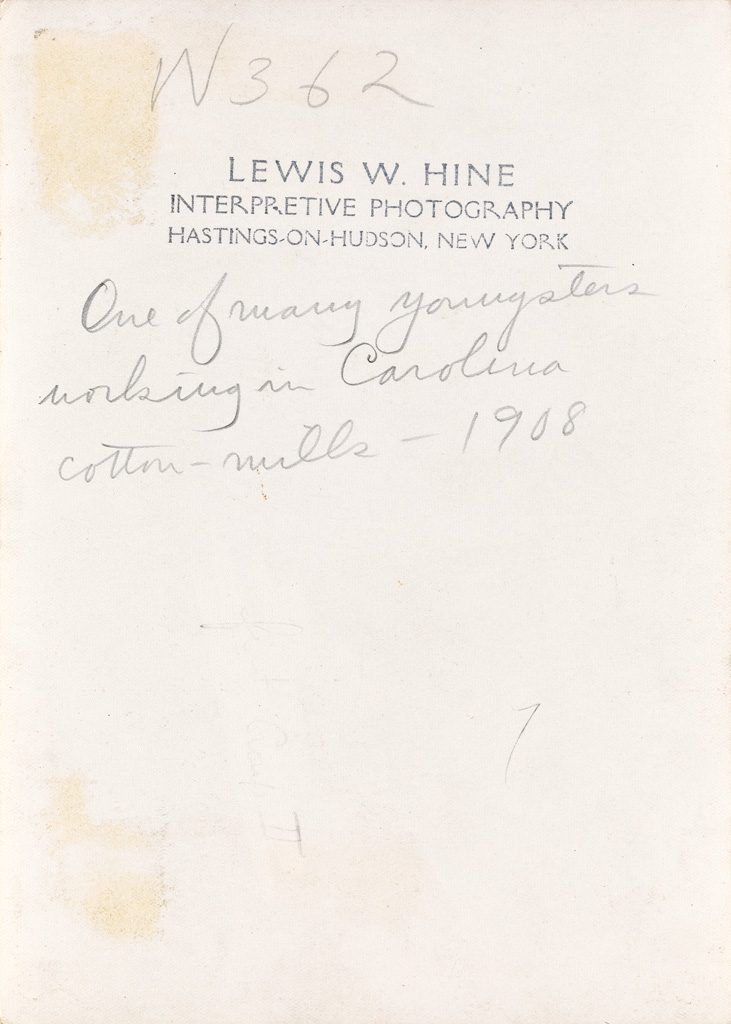
Lot 45: Verso, showing Hine’s notation “One of many youngsters working in Carolina cotton mills – 1908”
One of Hine’s projects that continues to resonate in the U.S. is his work documenting the trials of immigrants navigating Ellis Island and their arrival in America. The clearance process was long and arduous, and undertaken in dark, crowded halls by people who had just endured a trying transatlantic passage. Hine approached them to ask to photograph them, gesturing wildly because many didn’t speak English. His colleague, Frank Manny, ignited the flash powder to take the picture, creating a loud bang followed by dense clouds of smoke.
“Now, suppose we are elbowing our way thru the mob at Ellis Island trying to stop the surge of bewildered beings. . . . Here is a small group that seems to have possibilities so we stop ’em and explain in pantomine that it would be lovely if they would only stick around just a moment. . . . We get the focus, on ground glass of course, hoping that they will stay put, get the flash lamp ready.”

Lot 51: Lewis W. Hine, Climbing into America (Ellis Island group), silver print, 1908. Estimate $7,000 to $10,000.
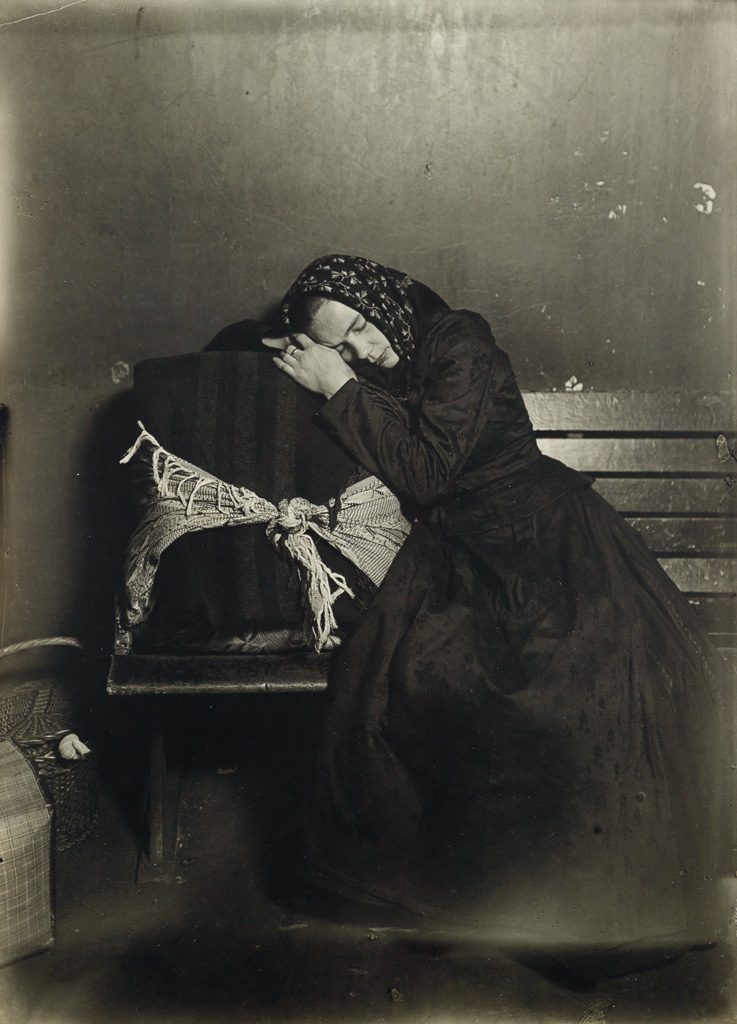
Lot 52: Lewis W. Hine, Slavic immigrant at Ellis Island, silver contact print, 1907, printed circa 1931. Estimate $4,000 to $6,000.
Arguably, Hine’s most famous project is his work documenting the construction of the Empire State Building. In 1930, a year after the stock market crash and onset of the Great Depression, Hine was hired to photograph the construction of what would become, for a time, the world’s tallest building. Hine balanced on beams 60 to 90 stories above city streets, capturing the exuberance and excitement as the magnificent skyscraper materialized. His acclaimed photographs depict the heroism of construction workers, who completed the project in a single year. Subsequently, he published a photobook on the subject: Men at Work.
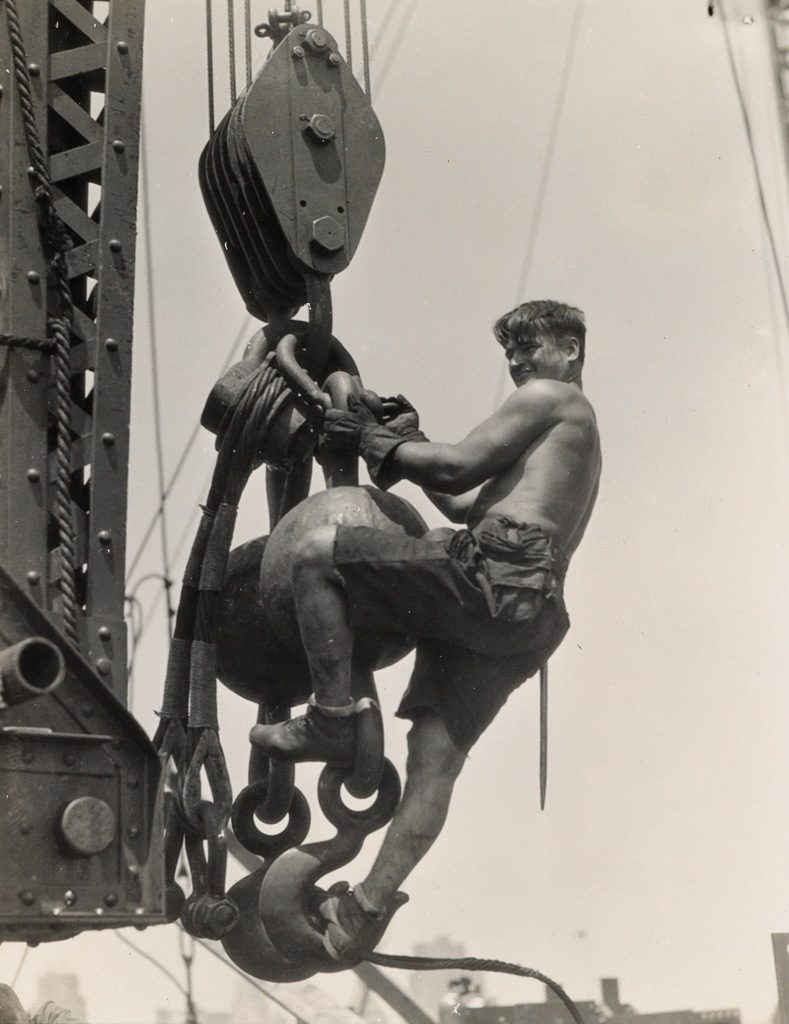
Lot 64: Lewis W. Hine, Laborer on connector, Empire State Building, silver contact print, 1930-31. Estimate $10,000 to $15,000.

Lot 65: Lewis W. Hine, Silhouetted crane hook (with lower Manhattan visible from the Empire State Building), silver contact print, 1930-31.
Estimate $8,000 to $12,000.
Hine also turned his attention to the quotidian lives of America’s poor, especially those in New York.
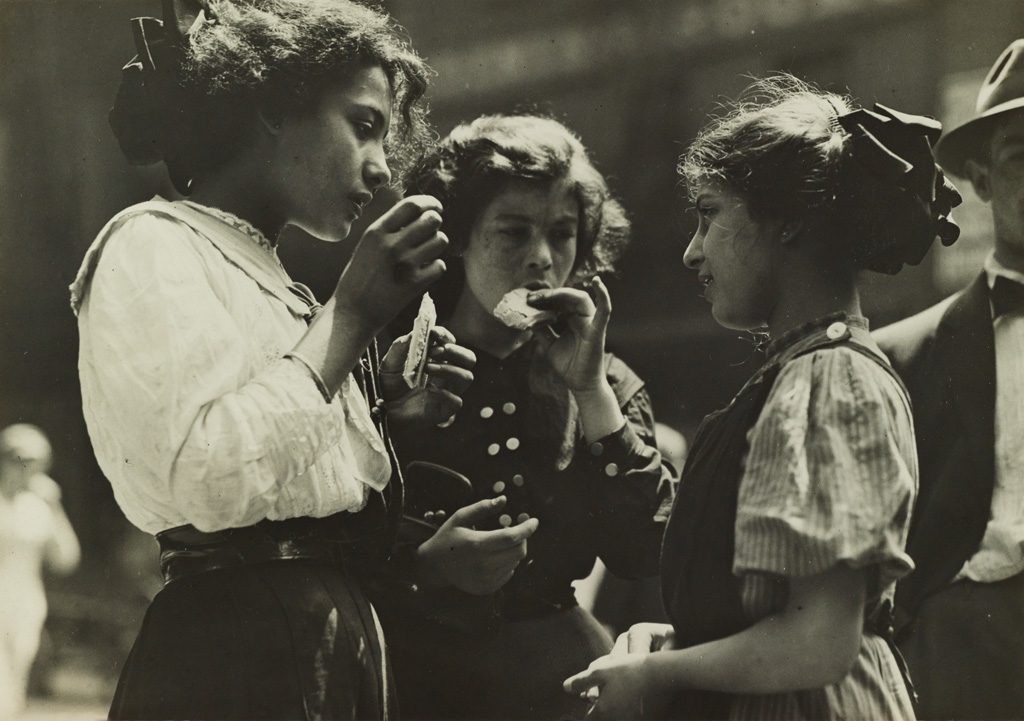
Lot 67: Lewis W. Hine, Noon hour in East Side factory distract, N.Y., silver print, 1912, printed circa 1931.
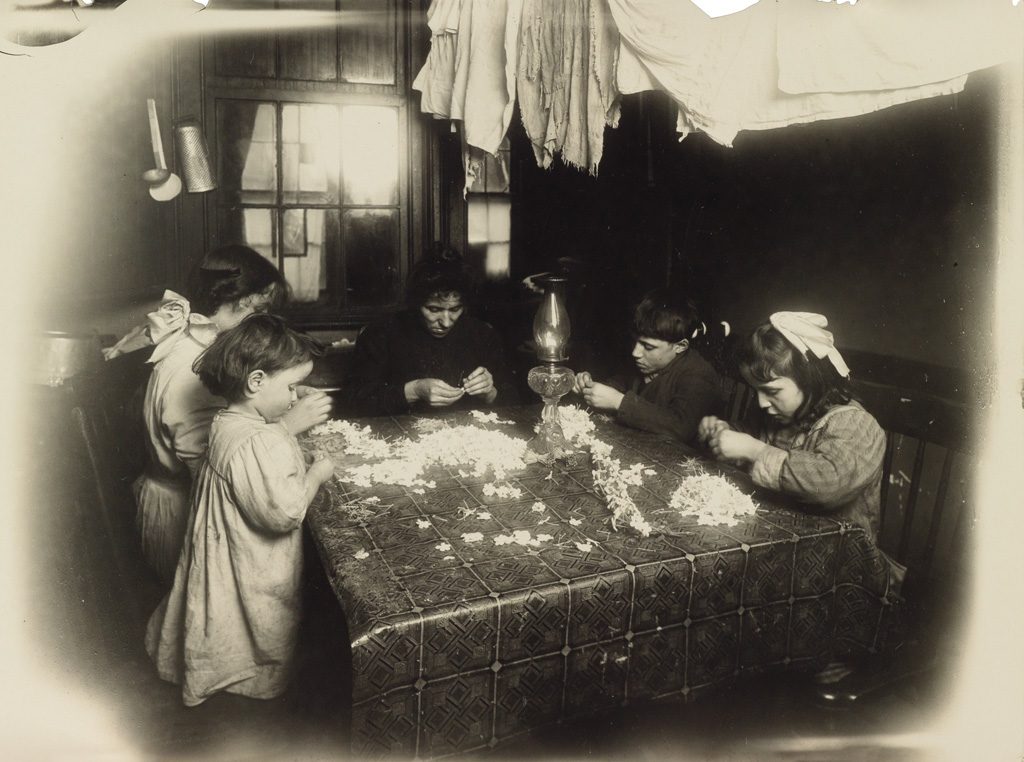
Lot 47: Lewis W. Hine, Artificial flowers, New York City, silver contact print, 1912, printed circa 1931. Estimate $3,000 to $4,000.
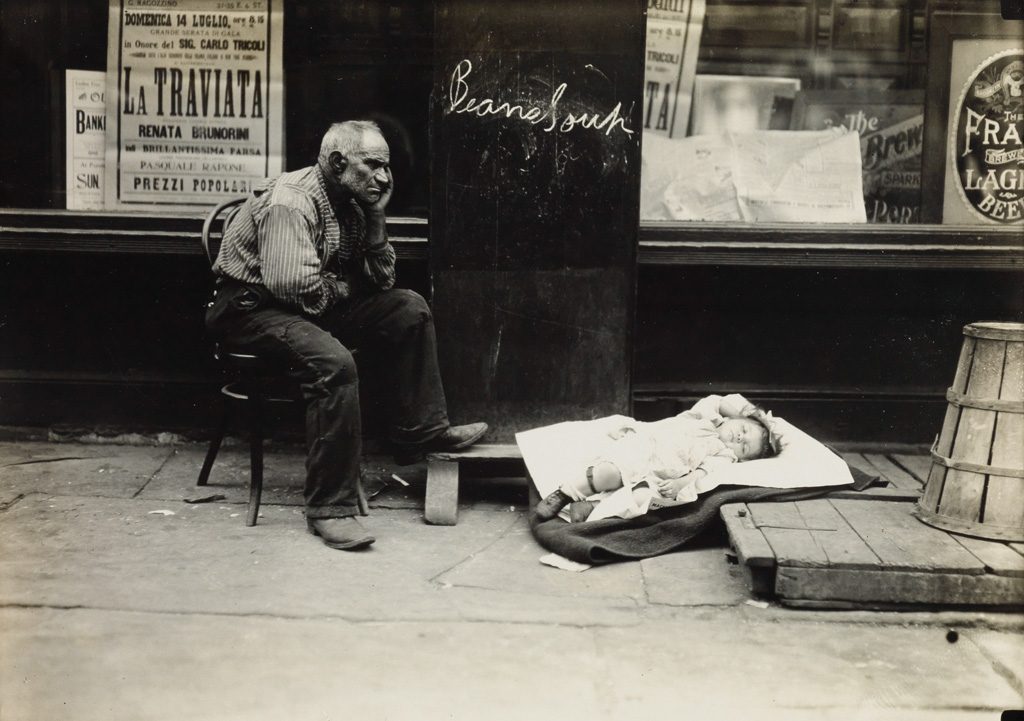
Lot 49: Lewis W. Hine, Hot day on East Side, New York, silver contact print, circa 1908, printed circa 1931. Estimate $4,000 to $6,000.
The run of Hine prints spans lots 44 through 67. Browse the full catalogue.
The post Lewis Hine’s Legacy appeared first on Swann Galleries News.